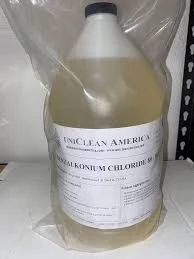Exploring the Applications and Benefits of PBTC in Chemical Processes
Understanding PBTC A Key Chemical in Water Treatment
In the world of chemical engineering and water treatment, certain compounds stand out for their effectiveness and versatility. One such compound is PBTC, or 2-Phosphonobutane-1,2,4-tricarboxylic acid. This chemical has gained significant recognition in various industries, primarily due to its remarkable properties in managing scale formation and corrosion in water systems. This article delves into the structure, applications, benefits, and environmental considerations associated with PBTC.
Chemical Structure and Properties
PBTC is a phosphonic acid derivative, characterized by its ability to chelate metal ions. Its unique structure, featuring a phosphonic group along with multiple carboxylic acid functionalities, allows it to interact effectively with scale-forming minerals such as calcium and magnesium. The chelation properties of PBTC enable it to prevent the precipitation of scale, which can lead to operational inefficiencies and increased maintenance costs in industrial applications.
As a water-soluble compound, PBTC is often available in liquid form, making it easy to integrate into various treatment systems. Its stability at a wide range of pH levels enhances its applicability in diverse environments, from cooling towers to reverse osmosis systems.
Applications in Water Treatment
One of the primary applications of PBTC is in the water treatment industry, where it plays a crucial role in preventing scale and corrosion in cooling systems, boilers, and other water-related processes. By inhibiting the formation of deposits, PBTC helps maintain the efficiency of heat exchangers and extends the lifespan of equipment.
In cooling water systems, for instance, the presence of calcium and magnesium ions can lead to the formation of scale on heat transfer surfaces, reducing their efficiency. By adding PBTC to the water, these ions are kept in solution, minimizing scale formation and enhancing heat transfer capabilities. Additionally, PBTC acts as a corrosion inhibitor, providing another layer of protection to metallic surfaces and reducing the risk of leaks and failures.
Beyond conventional industrial applications, PBTC has found its way into the oil and gas sector. It is often utilized in enhanced oil recovery processes, where its ability to stabilize emulsions and inhibit scale can significantly improve recovery rates and operational efficiency. This versatility demonstrates how PBTC can function across multiple sectors, adapting to various conditions and requirements.
pbtc chemical pbtc

Advantages of Using PBTC
The benefits of using PBTC extend beyond just its effectiveness in scale and corrosion control. For one, it is relatively low in toxicity, making it a safer alternative to some traditional water treatment chemicals. This factor is particularly important as industries face increasing pressure to adopt more sustainable practices.
Furthermore, PBTC's compatibility with other treatment chemicals enhances its utility in comprehensive water treatment programs. It can be combined with biocides, flocculants, and other agents to create effective treatment formulations that address diverse challenges, from fouling to microbial growth.
Moreover, PBTC's environmental profile is noteworthy. As regulations around water treatment and environmental sustainability tighten, the demand for low-impact chemicals like PBTC is expected to rise. Its biodegradable nature means that it poses less risk to aquatic ecosystems compared to persistent chemicals.
Environmental Considerations
While PBTC is generally considered to have a favorable environmental impact, it is essential to ensure that its use adheres to best practices in chemical management. Proper dosing and handling are crucial to maximizing its efficiency while minimizing any potential ecological risks.
Moreover, as industries around the globe strive for sustainability, the continuous evaluation of chemical processes, including the use of PBTC, will be necessary. Innovations in formulation and application methods will likely further enhance the environmental profile of PBTC and similar chemicals.
Conclusion
In conclusion, PBTC stands out as a vital compound in the realm of water treatment and industrial applications. Its effectiveness in preventing scale and corrosion, coupled with its low toxicity and compatibility with other chemicals, makes it a preferred choice for many industries. As the demand for sustainable chemical solutions continues to grow, PBTC's role is likely to expand, paving the way for enhanced efficiency and environmental stewardship in water management. Understanding and leveraging the advantages of PBTC will be key to addressing the challenges faced by industries in achieving optimal performance and compliance with environmental standards.
-
Water Treatment with Flocculant Water TreatmentNewsJun.12,2025
-
Polymaleic AnhydrideNewsJun.12,2025
-
Polyaspartic AcidNewsJun.12,2025
-
Enhance Industrial Processes with IsothiazolinonesNewsJun.12,2025
-
Enhance Industrial Processes with PBTCA SolutionsNewsJun.12,2025
-
Dodecyldimethylbenzylammonium Chloride SolutionsNewsJun.12,2025





